32 Unforgettable Bucket-List Experiences in America's National Parks

National Parks Wish List
Often credited as "America's best idea," the U.S. National Park System preserves some of the world's most scenic and ecologically unique areas for visitors' enjoyment. The only problem is where to start. Drawing on popular consensus and personal experiences from veteran travelers, this list details some of the essential sights and activities you can't miss — including one stunning hike in a park that's become so crowded that it will soon require reservations to visit.
Related: Under-the-Radar National Parks to Visit

Hike Devils Garden
Arches National Park, UtahOne of the jewels in Utah's collection of national parks, Arches has become too popular for its own good. To prevent overcrowding, visitors hoping to check it out will need to reserve a timed-entry slot if they plan to visit through October 2023, officials say. Those who do plan ahead won't want to miss Devil's Garden, which encompasses a few of the most otherworldly rock formations Utah has to offer. Cassandra Brooklyn, of the off-the-beaten-path travel consultancy Escaping NY, says the hike also presents an opportunity to leave the crowds behind. "Many of the garden's most popular arches and sights can be accessed fairly easily near the trailhead, but the truly breathtaking scenery is only accessible through a more challenging hike full of steep slopes and narrow drop-offs," she says. "The difficulty of the hike and the lack of bathrooms and water fountains means that the expansive views of the canyons and valleys are shared with very few people."
Related: Epic Hiking Trails Around the World
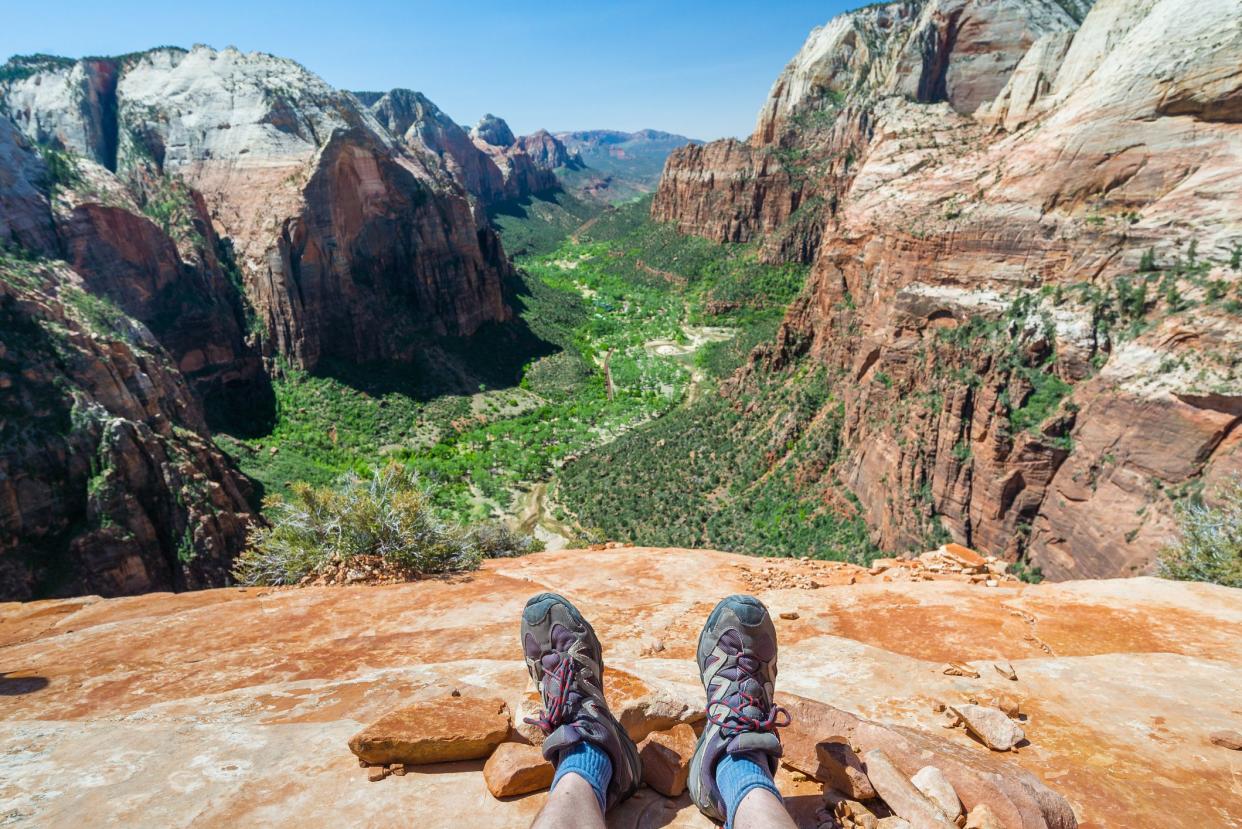
Hike Angels Landing
Zion National Park, Utah
See Zion from high above while you hike Angels Landing. The views are breathtaking from the summit, but you'll have to be an adventurous hiker to get there. The strenuous trail includes 21 switchbacks called Walter's Wiggles, and a half-mile of hairy ridge hiking up the Hogsback. Hang on to the bolted-in chains and don't look down if you're not fond of heights. You'll need a permit to climb the 1,488-foot rock formation due to overcrowding and safety concerns. Hikers will need to enter an online lottery for $6, and then will pay $3 more if they win one of the seasonal or last-minute passes.
Related: The Best State Park in Every State
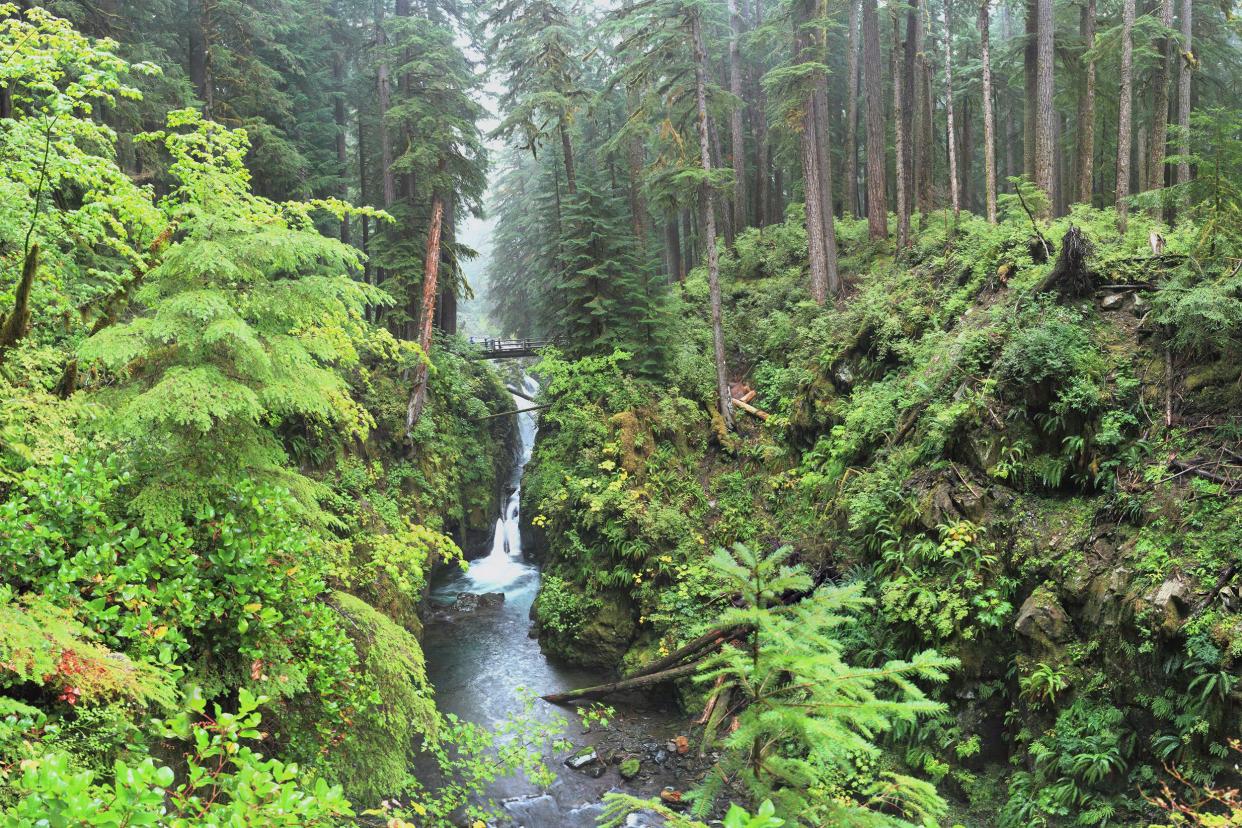
Listen to Nature Uninterrupted in the Rain Forest
Olympic National Park, WashingtonOlympic National Park is "the listener's Yosemite," according to audio ecologist and nature recordist Gordon Hempton. As well as the nation's only temperate rainforest, the Hoh Rain Forest on its west side is also one of the least noise-polluted places in the lower 48 states, with no roads intersecting the park and few planes passing overhead. This makes virtually any spot in the mossy ancient forest a treat for the senses, but especially Hempton's dedicated site for quiet preservation, One Square Inch. It's about a 2-hour, gently sloped hike from the Hoh Rain Forest Visitor Center.
For more great travel guides and vacation tips, please sign up for our free newsletters.

Kayak Through Sea Caves
Channel Islands National Park, Ventura, CaliforniaAccessible as a day or overnight camping trip from Ventura, Santa Cruz Island off the Southern California coast has a high density of sea caves, some among the world's longest and deepest. "How many national parks do you really get to 'go under?'" writes Anna Jacobson of the Santa Barbara Adventure Company, which offers kayak tours of the caves starting at around $186 plus ferry travel. "It is also a National Marine Sanctuary so wildlife is abundant here: whales, dolphins, sea birds, seals, sea lions, bat rays, kelp forests, etc." Experienced kayakers can also plan their own trip through the caves. Try not to miss out on snorkeling or tidepooling while you're here as well.
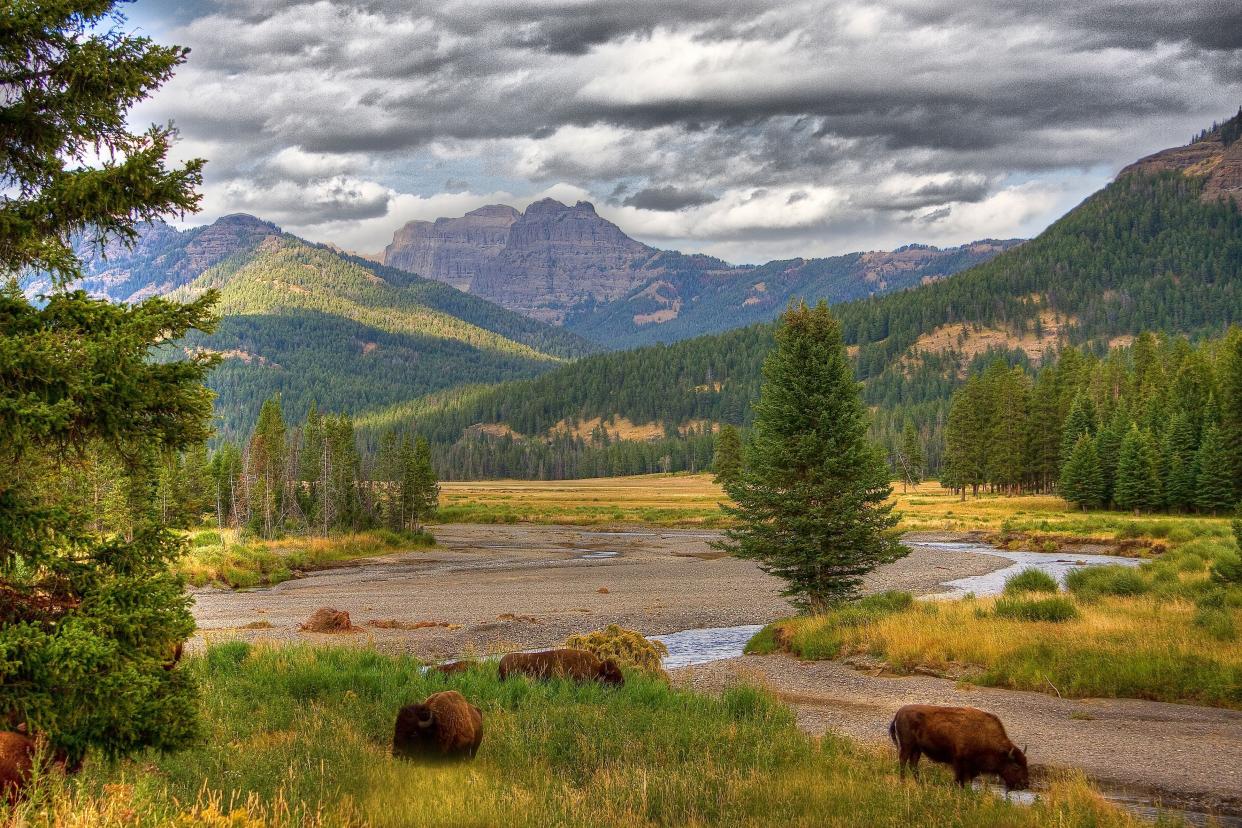
Wildlife Viewing
Yellowstone National Park, Wyoming, Montana, and IdahoOld Faithful erupting, the swirling volcanic colors of Grand Prismatic Spring, and the Grand Canyon of the Yellowstone are all amazing sights on the beaten path of America's first national park, but where Yellowstone really shines is in its opportunities for wildlife viewing. "If you are willing to get up extra early — 4 a.m. — and travel to Hayden Valley, you may have a chance of seeing some really cool animals," according to Frank and Gráinne Foley of the RV lifestyle blog The Roving Foleys, citing bison, grizzly bears, wolf packs, and elk herds ‘‘all from one morning." Conversely, family travel blogger Amy Martin of Two Little Pandas, prefers going at sunset. "I love setting up a camp chair with a blanket and a warm drink anywhere in the Lamar Valley where you have a bit of a view," she says. "Be sure to be ready about half an hour before sunset so you don't miss anything, and bring a decent pair of binoculars and a camera with a zoom lens, if you are a photographer." The best visiting times to avoid the crowds but catch the animals are late spring and early fall.
Related: 21 Places to Safely See Wild Animals Up Close
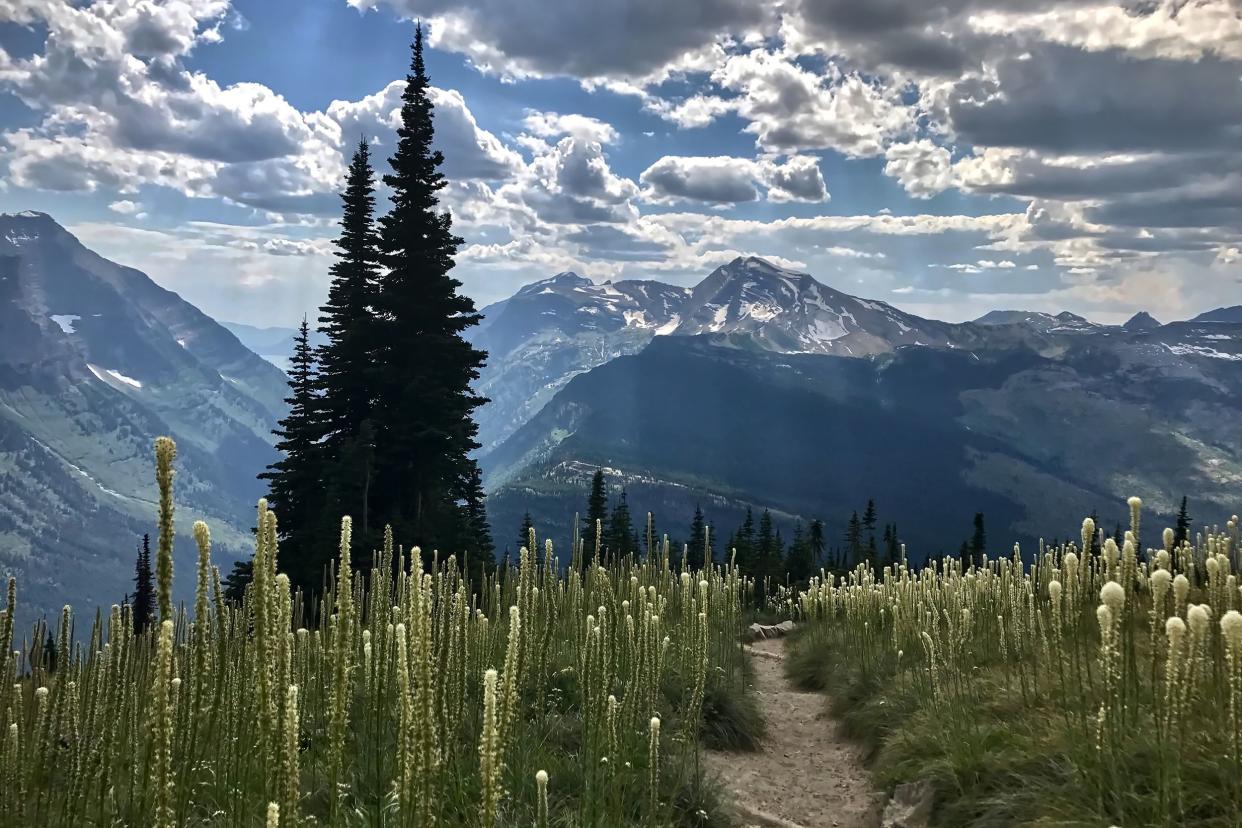
Hike the Highline Trail
Glacier National Park, MontanaThe breathtaking main thoroughfare through Glacier National Park, Going-to-the-Sun Road, crosses the Continental Divide at Logan Pass, which is where the Highline Trail begins. From verdant glacially carved valleys, the difficult hike cuts along a sheer granite cliff before crossing through the Garden Wall, a hillside exploding with shrubs and wildflowers throughout summer, and lingering snowfields on its way to alpine meadows. "When we hiked it, we saw a distant grizzly, several mountain goats, and bighorn sheep," says Melanie Musson, a writer for Effortless Insurance who lives in Montana. "To experience Glacier National Park to the fullest, you really need to hike, and of all the hikes we've done there, the Highline Trail was the one that captured the heart of the park best."

See the Sunrise on Grand Teton
Grand Teton National Park, Wyoming
Perhaps the most picturesque mountain range in the country, the Grand Tetons rising above the Wyoming prairie are spectacular anytime, but literally glow with beauty on a clear or even partly cloudy morning at dawn. "Waking up to see the first light of morning touch the peak of Grand Teton fills my soul with awe," attests Musson. "If there are scattered clouds, it's even more beautiful to see the entire sky in pink, purple, and peach, but even if the sky is clear, seeing that first light on the majestic Tetons is an experience that feels new every time." Though there's no shortage of campgrounds accommodating this view, there may be a shortage of sites for much of summer — making late spring or early fall a perfect time to visit.

Kayak California's Last Unspoiled River
Redwood State and National Parks, CaliforniaOne of the last free-flowing, dam-free river systems in the nation and the only in California, the Smith River in the state's northwestern corner winds through towering redwood forests at varying water speeds to the Del Norte coast, with plenty of wildlife along the way. Smith River Kayaks is one outfitter offering rentals as well as full- and half-day tours emphasizing fishing or ecological features starting at $50.
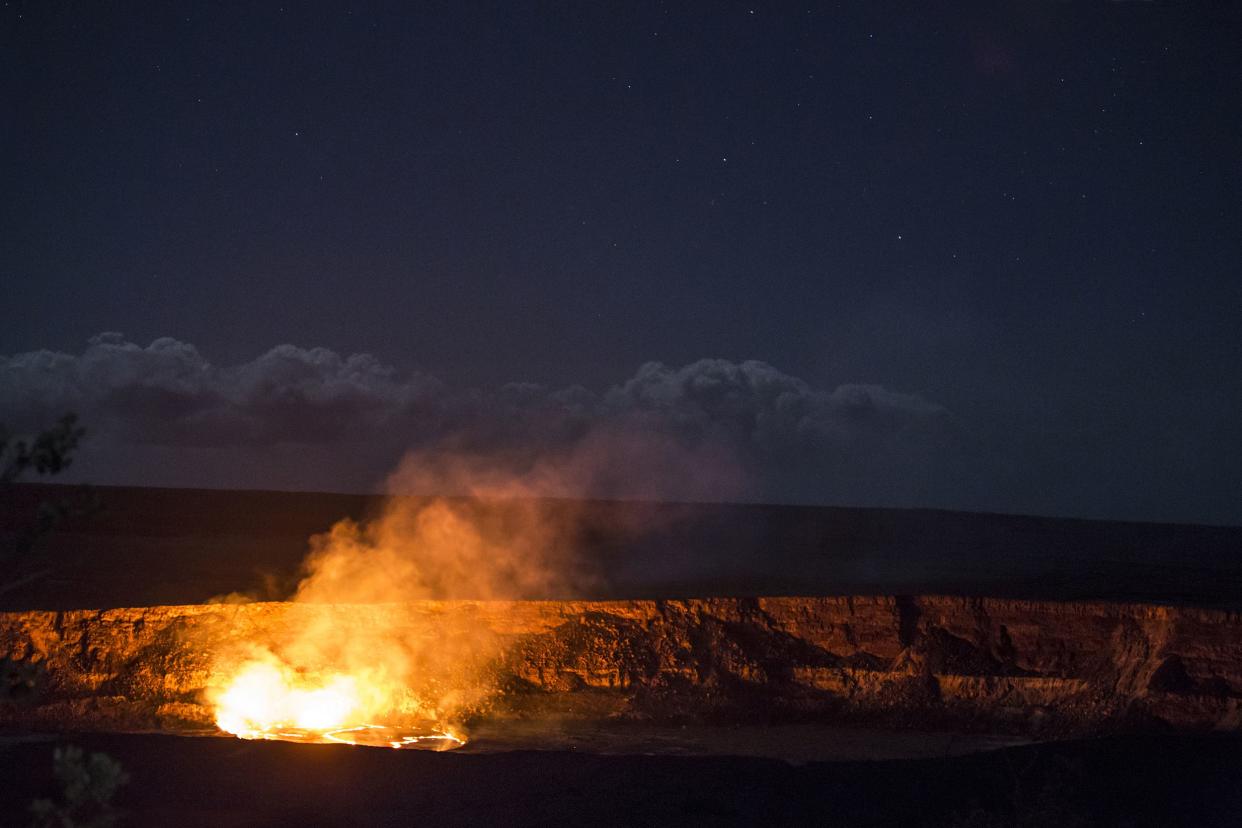
Stand at an Active Volcano Edge
Hawai'i Volcanoes National Park, HawaiiHawaii wouldn't exist without volcanoes, and Hawai'i Volcanoes on the Big Island gives visitors their best chance to witness these mighty geological features in action. While there's no guarantee you'll be able to witness the lava flows (check with the visitor center or book with an outfitter for your best chance), there are always steam vents and volcanic craters you can stand on the edge of, feel the heat, and admire the alien landscape, in which select plants still thrive. In particular, travel blogger Sarah Vanheel of CosmopoliClan recommends the 4-mile loop through rainforests down into the Kīlauea Iki crater, calling it "such an epic experience that made me feel so small and yet so powerful."
Related: The Best of Hawaii on a Budget
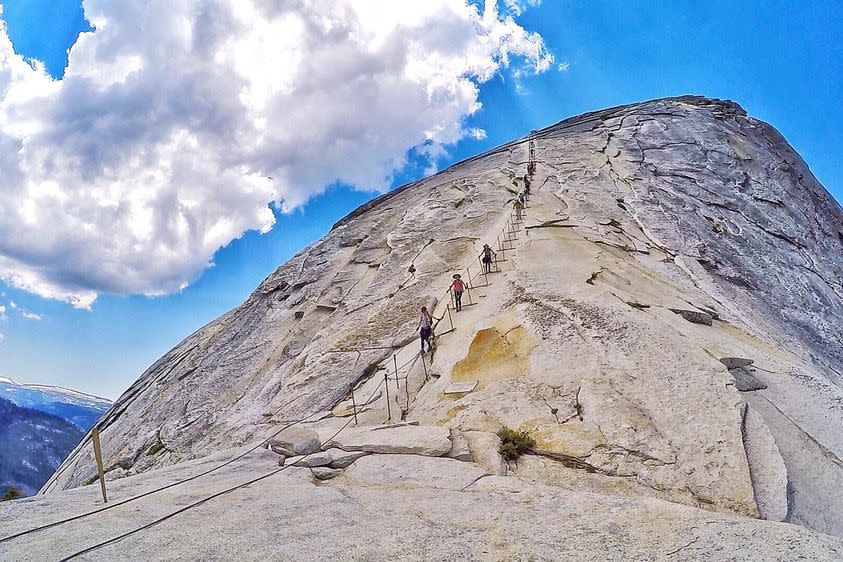
Climb to the Summit of Half Dome
Yosemite National Park, CaliforniaRequiring strong physical fitness, $10 advance and daily permitting (a preseason lottery system starts in March for summer), 10 to 12 hours of travel, and steel cable handholds for the final ascent, making it to the top of Half-Dome isn't for everyone. Those who do brave the Half Dome Trail, however, are rewarded with unparalleled views of the granite cliff face and Yosemite Valley below, a reward worth working for. "I have never felt so accomplished to do something that I was afraid of," says Lauren Mochizuki, a budget-travel blogger. For those lacking the physical means or who are afraid of heights, Mark Whitman of Mountain IQ recommends the Panorama Trail as an alternative, a relatively easy 8.5-mile day hike passing some of the valley's most famous falls and landmarks.
Related: 21 Bucket List Experiences for Adrenaline Junkies
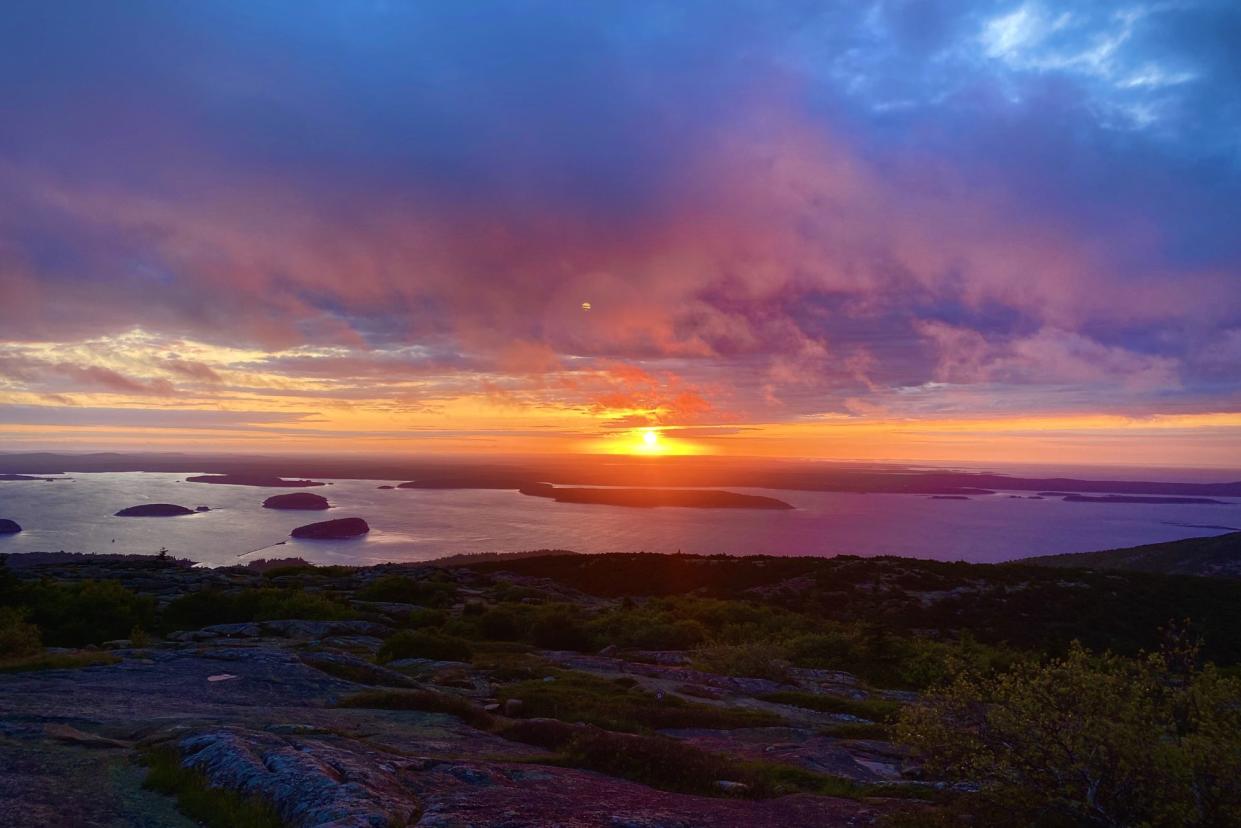
See the Nation's First Glimpse of Sunrise
Acadia National Park, Maine
The first rays of sunlight to reach U.S. shores do so at Acadia National Park in Maine, at least from October through March. Steve Silberberg of Fitpacking, a company that guides backpacking adventures aimed at weight loss, has been there to see it at 4:48 a.m. on the December solstice from Cadillac Mountain, the highest point on the Atlantic seaboard and a major attraction within Acadia. Once you've seen the morning dawn over a seascape of foggy islands, consider exploring more of Mount Desert Island by bike, a great way to more intimately see the park while still covering considerable ground.
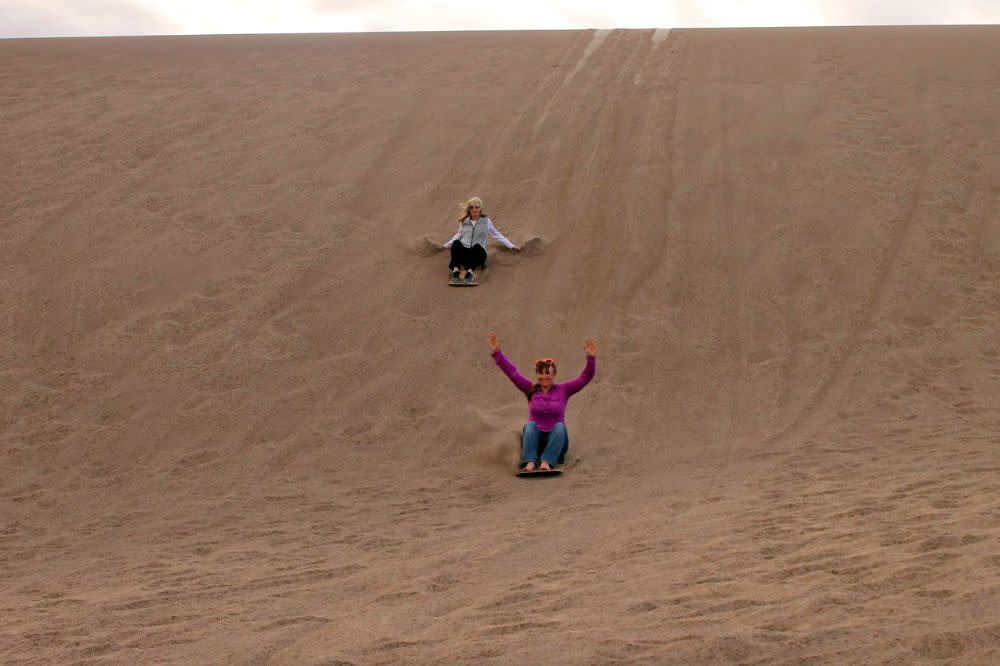
Go Sand Sledding or Boarding
Great Sand Dunes National Park, Colorado
It doesn't need to be below freezing for you to sled or board in Colorado's nationally preserved sand dunes, where there are ridges up to 750 feet high a short walk from the main parking center, and any non-vegetated slope is fair game. From April through October, outfitters rent junior or adult-sized waxy sand sleds for around $20 per day. To add more insight to your visit, travel blogger Lotte Eschbach of Phenomenal Globe recommends the free evening tours with park rangers that discuss the ecosystem of the dunes and let you stargaze through a telescope on clear nights.
Related: See the Stars: Dark Sky Destinations Across America

Float the Santa Elena Canyon
Big Bend National Park, Texas
Big Bend is a remote mountainous area larger than the state of Rhode Island, and two- to three-day canoe trips through Santa Elena Canyon lets one sample its solitude and magnificent scenery, like 1,500 feet high canyons and riparian ecosystems contrasted with desert. A one-day option would be to paddle upstream and "boomerang" back to the car-accessible entry-point, but staying overnight offers a better chance of wildlife spotting and stargazing opportunities. Either way, a backcountry use permit is required, but costs nothing for single-day trips.
Related: Best National Parks to Visit in Winter
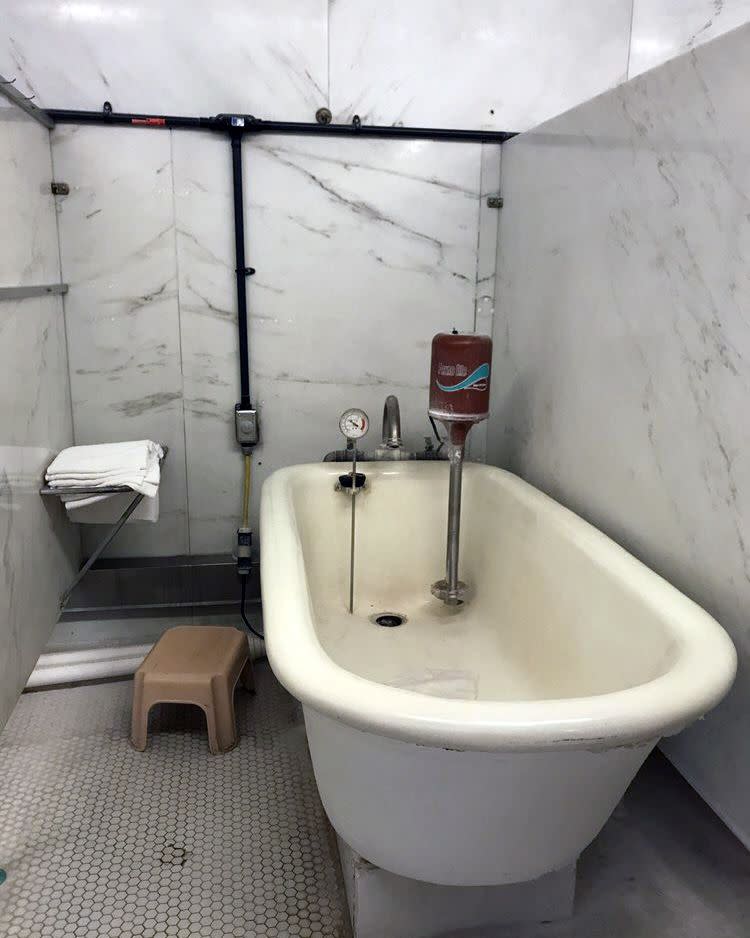
Get a Traditional Spa Treatment
Hot Springs National Park, Garland County, Arkansas
Traditional bathhouses are such a big part of this national park's history that the park's visitor center/museum is in a former one, the Fordyce Bathhouse, and on Bathhouse Row, of course. Once you've done the self-guided tour through its old-timey marble interiors, you can experience the real thing at the Buckstaff Bathhouse, which offers the same European-inspired program since 1912, including soaks in several temperatures of pain-relieving natural mineral waters, hot-pack heat therapy applications, and a 2-minute cool-down "needle shower" to wrap up. Starting at $40, it's the kind of luxuriant experience you can't expect from any other national park.
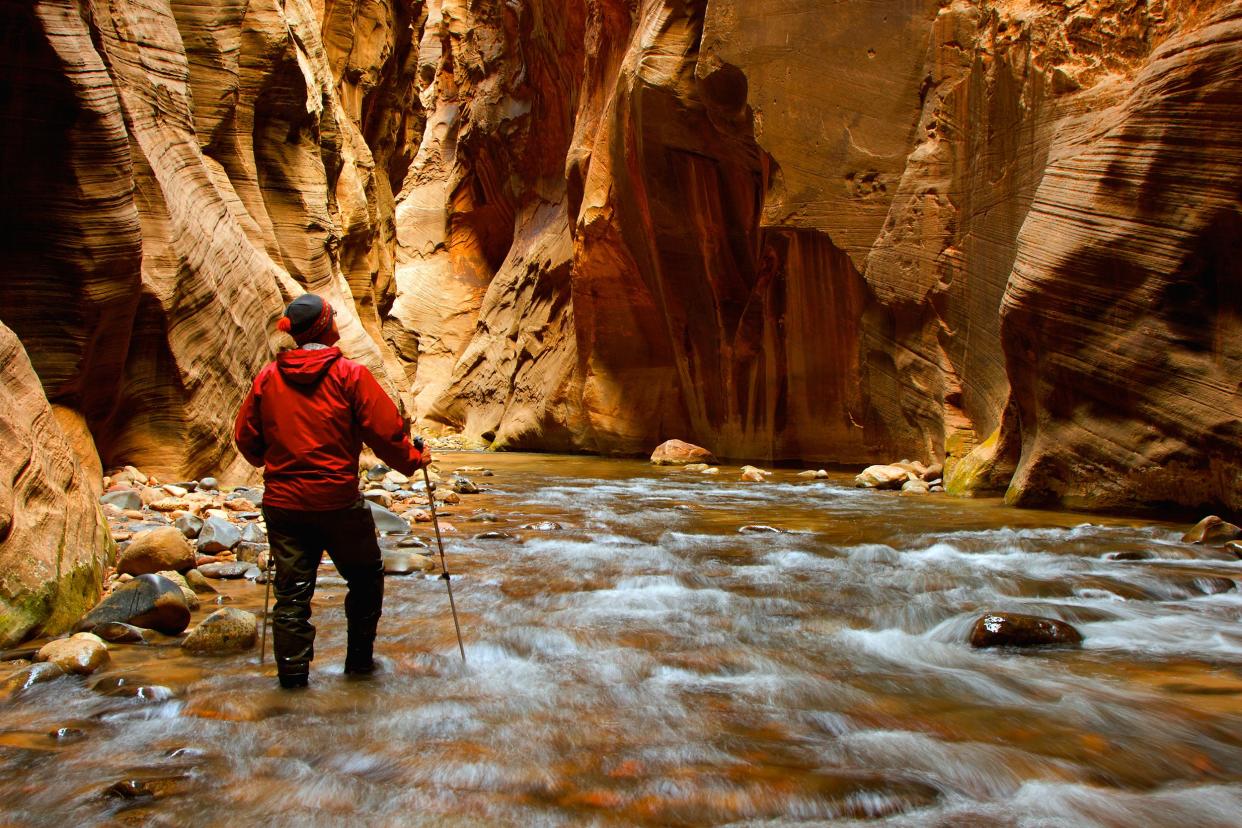
Hike the Narrows
Zion National Park, Utah
The Narrows is a slot canyon carved by the Virgin River. Less than 20 feet wide in certain areas, hiking it involves wading and occasionally swimming through the river between the colorful gorge walls rising more than 2,000 feet above. "Although often challenging, the payoff is some of the most remarkable scenery and psychedelic geology in any national park," says travel writer and photographer James Kaiser. It's best to visit The Narrows in spring or summer for tolerable water temperatures, and be mindful of the weather forecast to avoid flash floods.

See Conifer Trees Change Color
North Cascades National Park, Washington
Seldom visited and remotely located in far northwestern Washington state, North Cascades boasts some of the most dramatic mountain vistas and turquoise glacial rivers this side of the Canadian border. SR 20, otherwise known as the North Cascades Highway, gives motorists a good glimpse of this scenery as it winds through the valleys and over hydroelectric dams powering all of Puget Sound. For a particularly unique experience within the parks system, Pacific Northwest travel writer Adria Saracino of Emerald Palate recommends a "larch march" on the eastern slopes in fall, when these deciduous conifers turn yellow and shed their needles. "There are many hikes both in North Cascades National Park and the Okanogan-Wenatchee National Forest," says Saracino, "but the trick to finding them is to scour the trail comments on wta.org (Washington Trails Association) starting mid-September through mid-October to see when other hikers say the larches are turning."
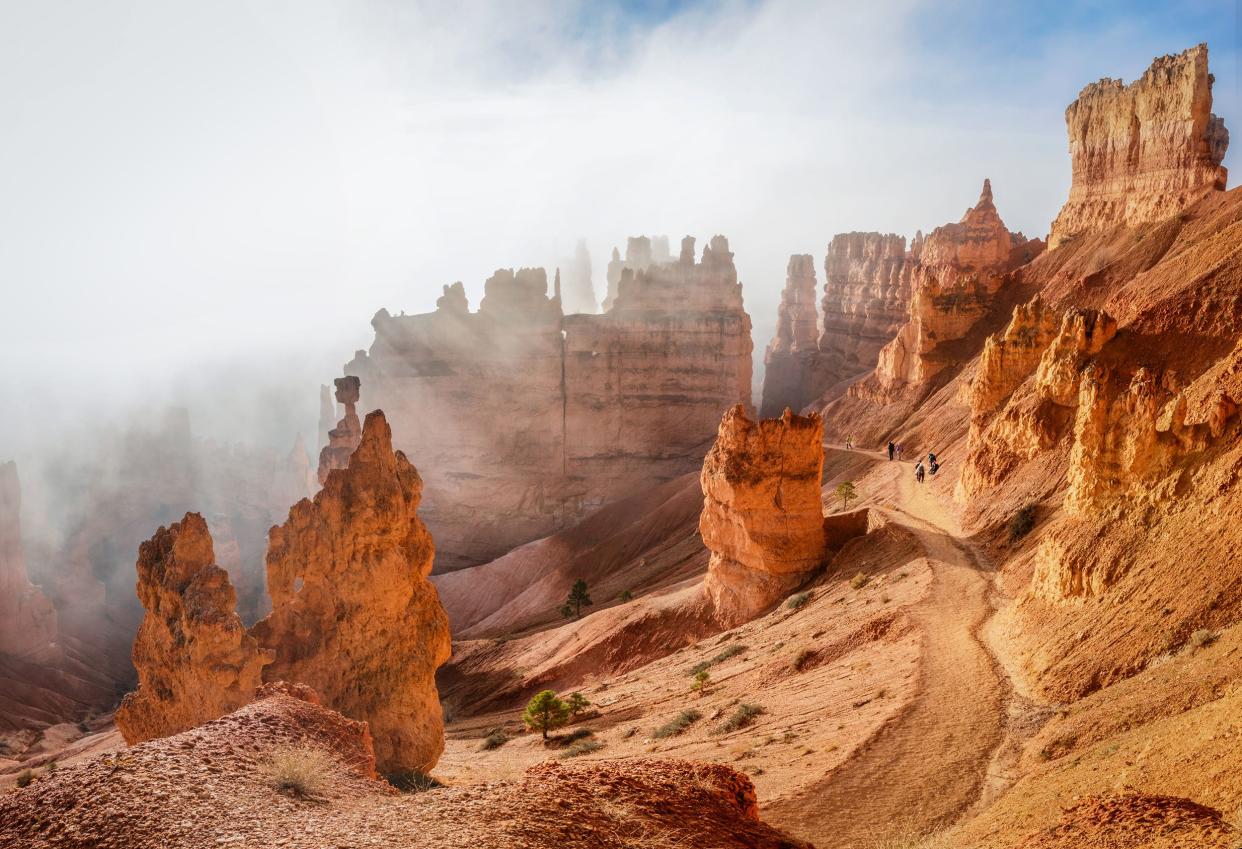
Hike Among the Hoodoos
Bryce Canyon, Utah
The car-accessible spots in this southern Utah park give an expansive view of its otherworldly orange rock formations called hoodoos (just as beautiful in warm weather or with a dusting of snow in winter), but hiking down from the rim will let you get a closer look at these naturally sculpted rock towers. Nicole Lewis of the adventure travel blog Wandering with a Dromomaniac says the best place and time to do so is the Peek-A-Boo Trail at sunrise. "The orange, pink, and tan hues come alive as the sun peeks over the side of the amphitheater and the whole canyon looks like it's on fire," she describes. "I have never been so overcome with emotion as [when] I witnessed the sun cresting over the cliffs and hitting the hoodoos deep within the canyon."

Stargaze Beneath Dark Skies
Natural Bridges National Monument, Utah
Utah's national parks are deservedly famous for many reasons, including their lack of light pollution and opportunities for stargazing. "Utah's sky parks are fast becoming the last places where we are actually able to see dark skies and indulge in some amazing stargazing," advises Saurabh Jindal of the Talk Travel app. Now the world's first International Dark Sky Park, Natural Bridges National Monument boasts the darkest sky ever assessed by the NPS, with the stars contrasting beautifully against the dark canyonlands on a clear and moonless night. Stargazing is allowed anywhere in the park, with rangers presenting free guided programs in spring and summer.
Related: 19 Money-Saving Tips for Visiting National Parks
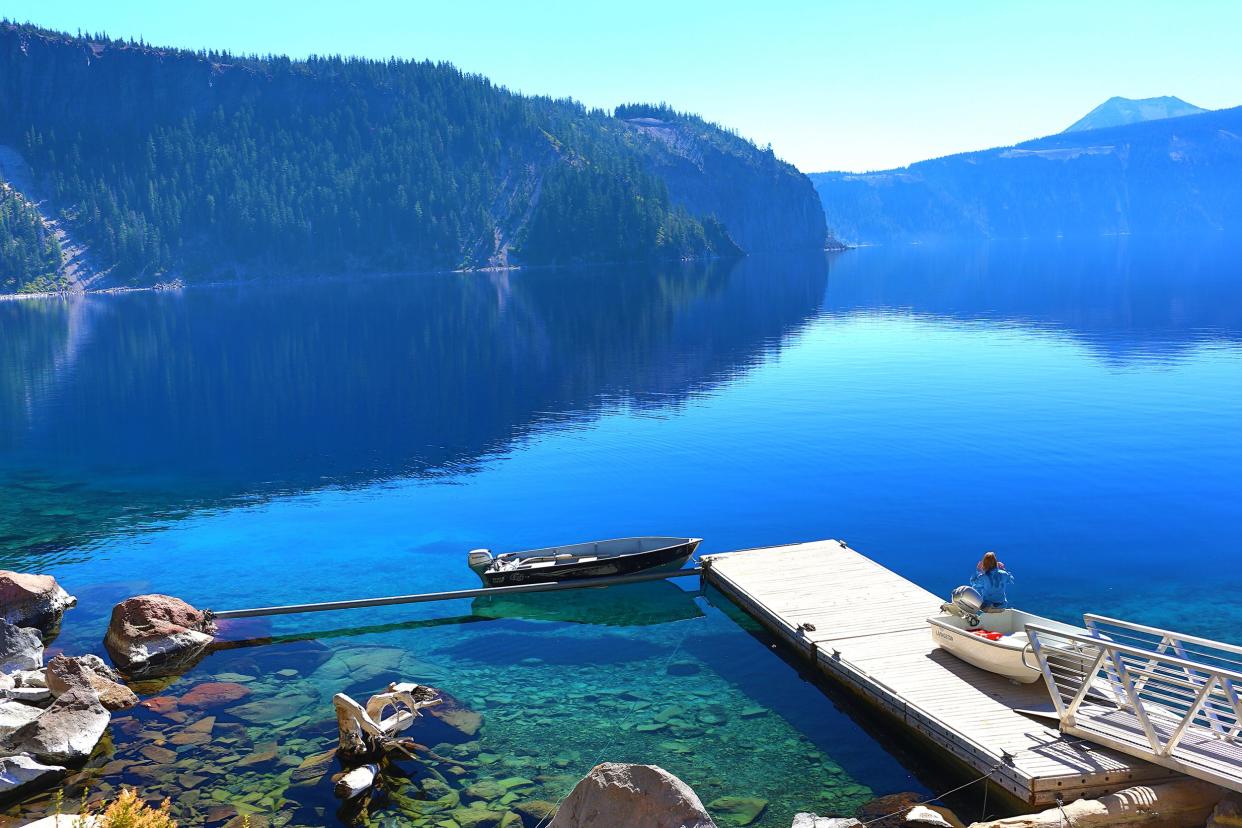
Wade Inside a Volcanic Lake
Crater Lake National Park, OregonLocated inside a 2,148-foot caldera, Crater Lake's surface is a pristine mirrored blue set against deep evergreens lining the inactive volcano's steep rim. The only legal way to see its surface up close is by scaling down the steep and strenuous 1.1 miles to Cleetwood Cove, accessible from mid-June through October. Once onshore, visitors can swim and wade into the refreshing waters, which remain a chilling 57 degrees even in summer, or take one of the daily boat tours around Wizard Island ($28 per adult; $18 per child).

Airboat through Subtropical Wetlands
Everglades National Park, FloridaIn contrast to the canyonlands and mountains of many national parks, the Everglades preserves subtropical wetlands that are among the world's most diverse and endangered natural environments. Teeming with birds, marine mammals, panthers, and amphibious reptiles, it's the only place on earth where alligators and crocodiles coexist in the wild. While you can obtain a backcountry permit or take an ecotour to camp overnight on secluded island beaches, another of the easiest and best ways to see the Everglades' ecology is by airboat (starting at $62 per adult for a 3-hour experience). "An airboat is a unique amphibious vehicle that can take passengers through the shallow waters of the Everglades and onto and across dry ground," explains Charles McCool of McCool Travel.

Snorkel through Shipwrecks and Coral Reefs
Dry Tortugas National Park, FloridaWith dry land covering less than 1% of its area, the only way to really see Dry Tortugas National Park in the southwest Florida Keys is in the water. Divers and snorkelers here can get an intimate look at the world's third-largest coral reef system, as well as submerged pieces of U.S. military history (such as the popular Windjammer site) — meaning you're among sea turtles as well as shipwrecks. Unfortunately, getting to some of these will require your own mode of overwater transportation and a boat permit, since the passenger ferry and seaplane to Dry Tortugas drop off only at Garden Key.
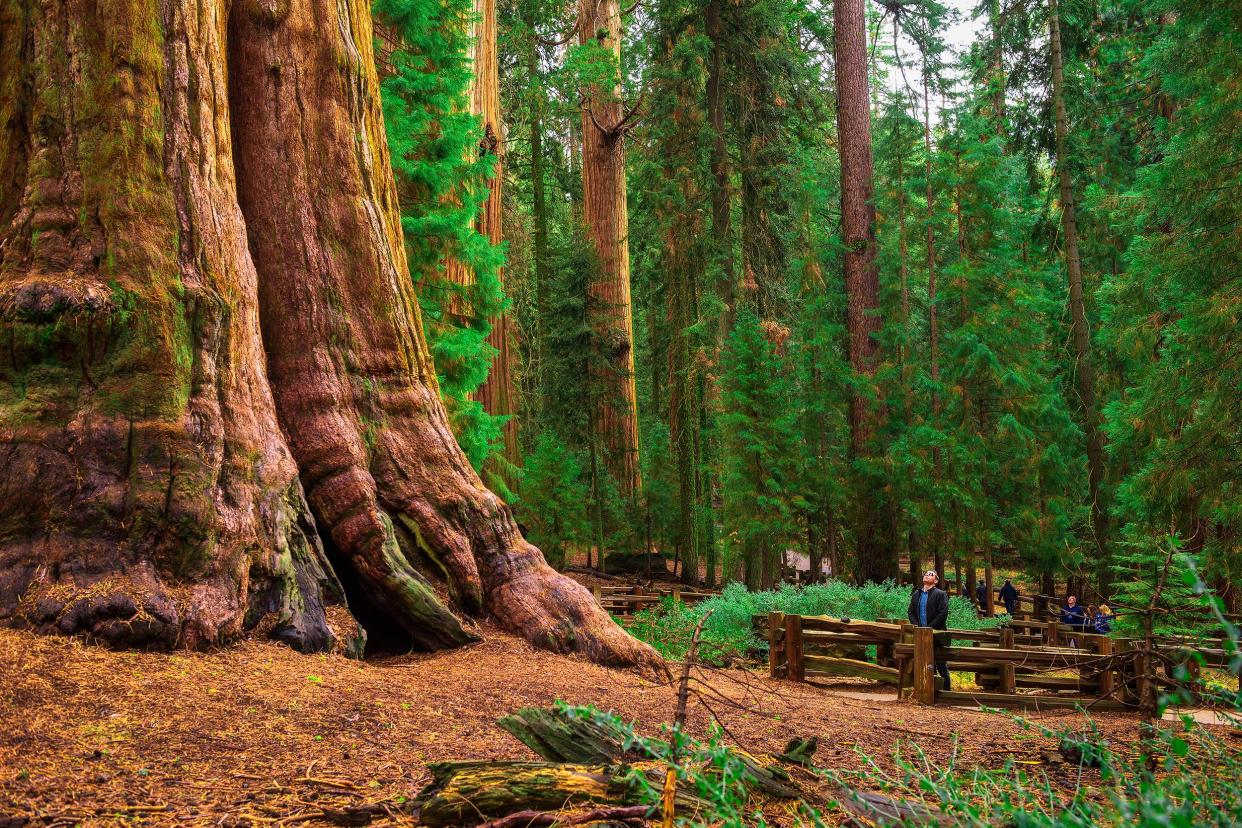
See the World's Largest Tree
Sequoia National Park, California
Though not as tall as its redwood relatives farther north, the General Sherman tree in Sequoia and Kings Canyon National Parks holds the world record for largest living tree. This makes standing at its base a humbling experience, even with other, selfie-snapping tourists around. Don't stop exploring at this landmark, however, as General Sherman is surrounded by Giant Forest, the largest grove of unlogged sequoia groves, where you can see the scars of past wildfires and perhaps the park's premier vista at Moro Rock.

Heritage Fruit Picking
Capitol Reef National Park, Utah
Located in the Waterpocket Fold, a geologic "wrinkle on the earth," Capitol Reef boasts even more of the dramatic rock formations for which southern Utah is famous. One distinction it offers is the chance to explore and pick fruit from heritage orchards planted by early Mormon settlers in the preserved pioneer village of Fruita, within two miles of the park's visitor center. Free to stroll through any time, the varying orchards open for harvesting throughout late spring and summer with ladders, hand-operated pickers, and a self-pay station to ring up everything from cherries, peaches, and apples to mulberries, almonds, and walnuts. "The park offers fruit pies and tarts for sale," notes blogger Andi Fisher of Misadventures with Andi. "It is rare that national parks have food unless it is in one of their lodges, so it is a wonderful food experience not to miss when visiting Capitol Reef!"

See the Northern Lights
Denali National Park, Alaska
Witnessing the aurora borealis in person deserves a place on any bucket list, and Denali National Park offers some of the best opportunities within the United States. Like any atmospheric phenomenon, finding the northern lights requires the right conditions and a fair amount of luck, so make sure to go as far north as possible — and when there is enough darkness to allow it — from the last weeks of August through mid-April. Most importantly, consult the forecasts that are issued about three days to a week in advance.
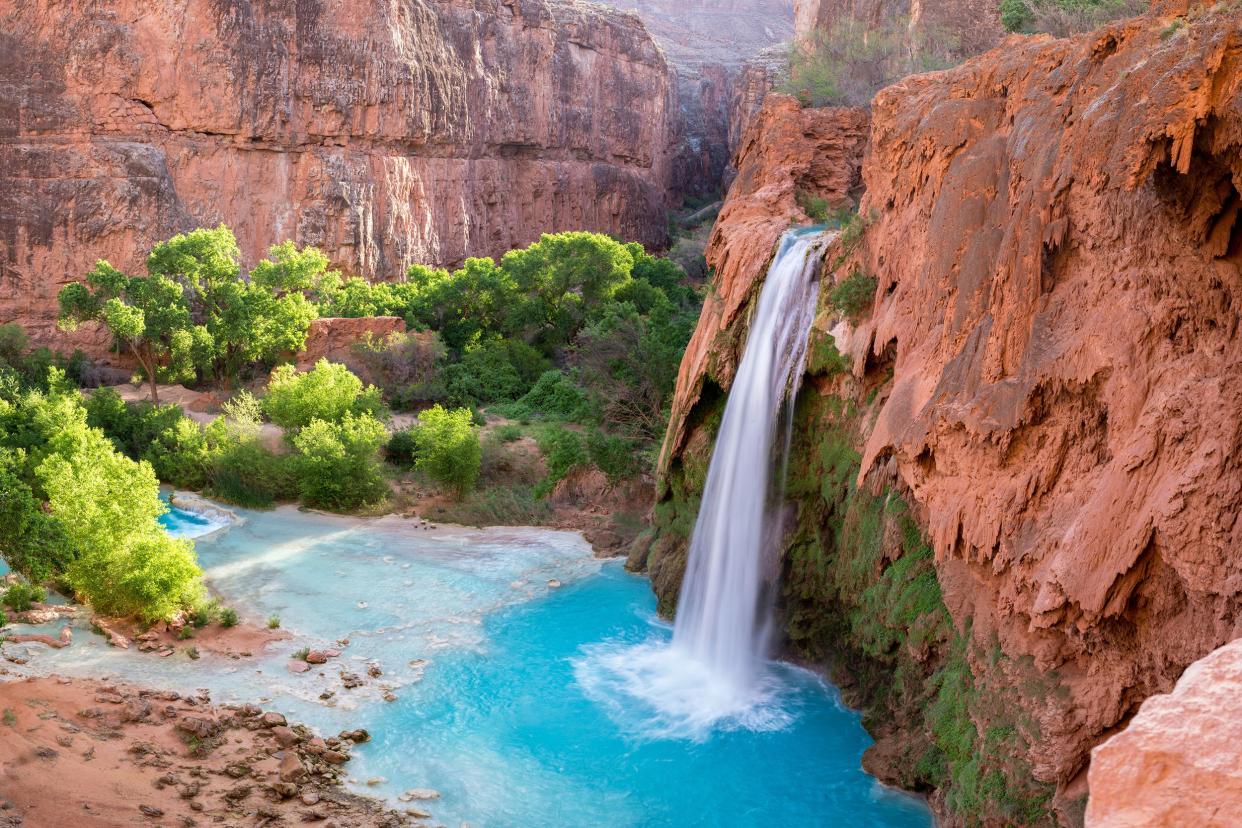
Camp at Havasupai Falls
Grand Canyon National Park, Arizona
Though the Grand Canyon is a sight to behold from any angle, including the parking lot-adjacent spots along the southern rim, venturing down into the canyon gives a more diverse view of the environment. Provided you have some backpacking experience, the blue-green falls and Indian reservation of Supai Village are the most epic (and in demand) destinations to shoot for. 2023 marks the first time since the start of the COVID-19 pandemic that visitors are welcomed back to the destination. The falls reopened Feb. 1 to current permit holders, and only travelers whose trips were affected by the pandemic closure are able to make reservations for 2023. In the past visits have required advance online reservations and a stay of at least three nights at $100 or more per night.

Explore Native American Cliff Dwellings
Mesa Verde National Park, Colorado
Preserving the archeological heritage of the Pueblo natives, Mesa Verde in southwestern Colorado encompasses hundreds of cliff dwellings and other structures carved out of sandstone canyons, including Cliff Palace, the largest in North America. Ranger-assisted tours will "allow visitors to move through a cliff dwelling in a socially distanced way." The $8 tickets can be via Recreation.gov up to 14 days in advance.
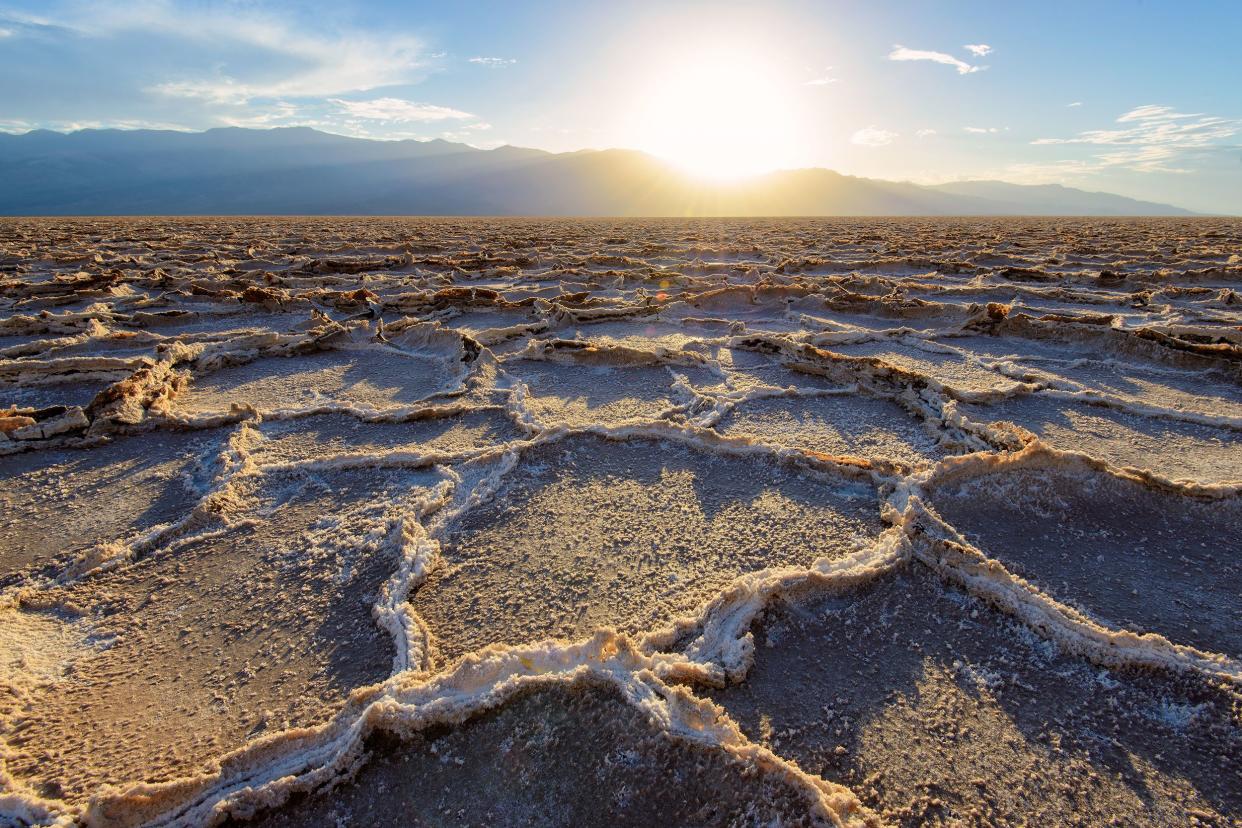
Visit the Lowest Spot in North America
Death Valley National Park, California and Nevada
A reflective, mirage-esque landscape seems to span on endlessly at Badwater Basin, a large salt flat at the second-lowest elevation in the Western Hemisphere, 282 feet below sea level. Visit between November and March to make the quarter-mile walk onto the salt flat in tolerable weather, and keep an eye out for the sign marking sea level on the cliff above. To see Death Valley really come alive, try planning a trip around the wildflower blooms following the winter and spring rainfalls, which range from low elevations starting in February to mountain slopes into July, depending on conditions.

Hike to an Icefield
Kenai Fjords National Park, AlaskaKenai Fjords is named for the inlets carved by icy deposits descending from the 700-square-mile Harding Icefield, one of the nation's largest, and the source of 38 glaciers. Accessible mainly in the height of summer in July and August (sometimes via ranger-led programs), an 8.2-mile strenuous trail gains 1,000 feet per mile in elevation, winding through cottonwood forests and heather meadows before reaching the viewpoint over vast horizons of frozen tundra, "a window to past ice ages."
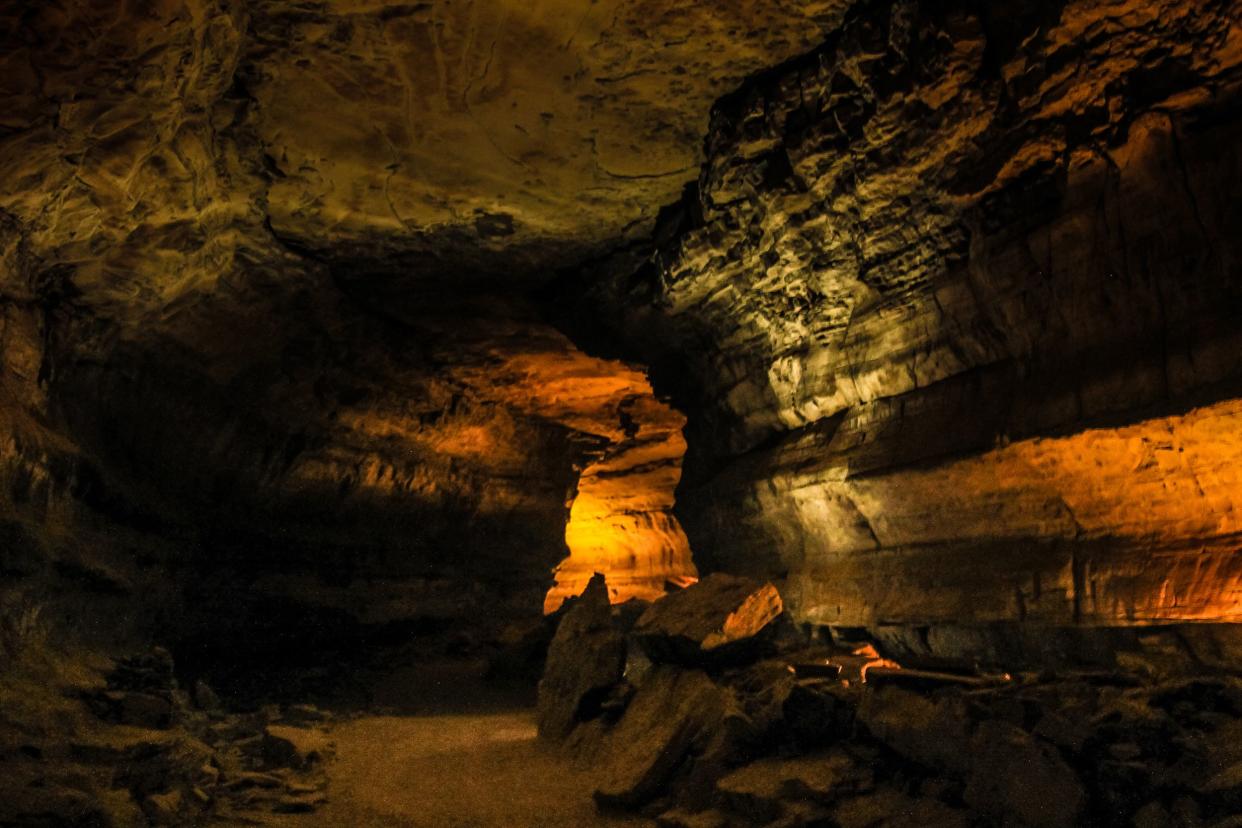
Explore the World's Longest Cave System
Mammoth Cave National Park, Kentucky
This park features the world's longest known cave system, with more than 400 underground miles explored so far, 10 of which are visitor accessible. The best time to visit is autumn, when the changing leaves transform the surrounding Green River Valley and the summer crowds wane. Park rangers lead a variety of reservable tours covering the cave's geological and anthropological history, most ending at the dripstone wall aptly known as Frozen Niagara.
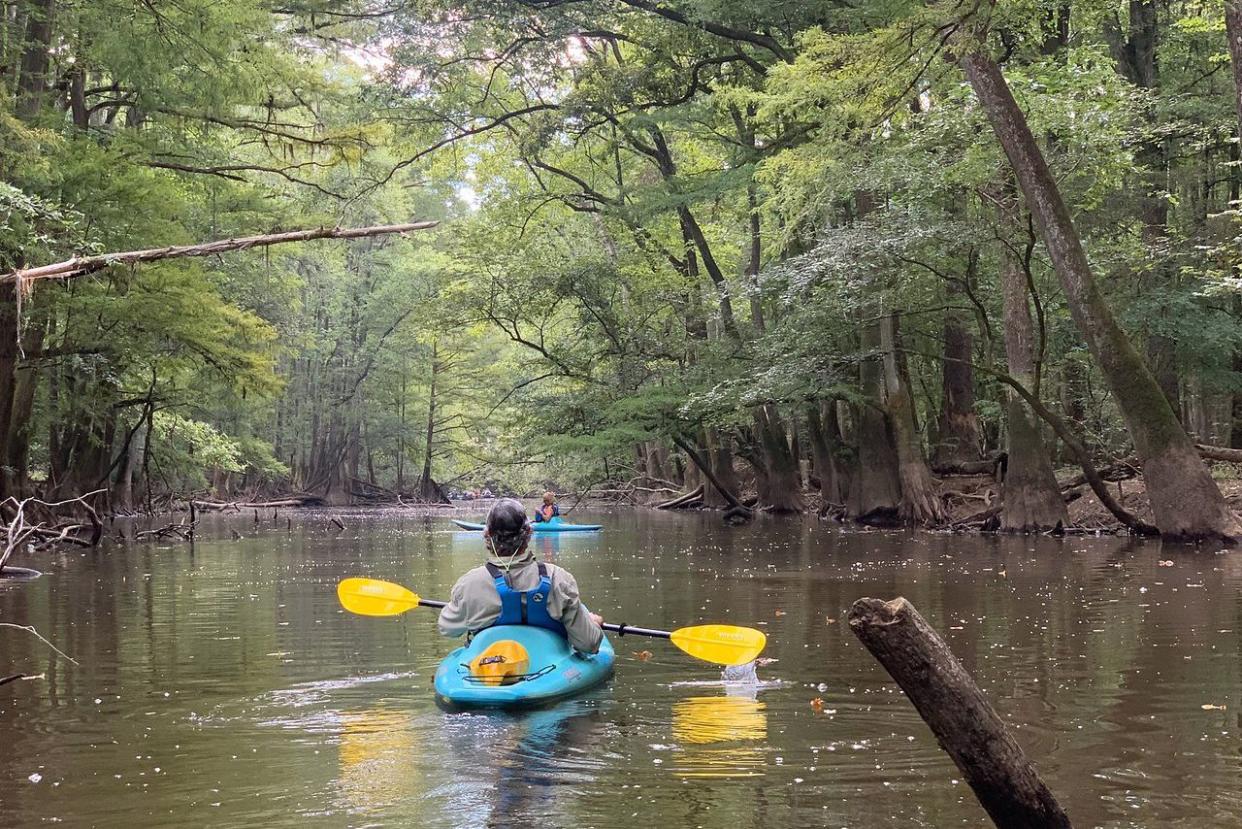
Paddle the River Blue Trail
Congaree National Park, South Carolina
This little-known national park encompasses the largest area of old growth bottomland hardwood forest in the southeastern United States, with some of the oldest and tallest trees in the country creating floodplain habitats for a wide variety of creatures. The most convenient way to get a taste of the scenery is via the 2.4-mile boardwalk loop, but the best way is by paddling the 50-mile Congaree River Blue Trail. Beginning in the state capital of Columbia, it leaves behind these urbane surroundings as it passes prehistoric Native American sites, high bluffs, and sandbars. For those without their own gear, you can book daylong canoe tours through the NPS or private outfitters such as River Runner Outdoor Center.
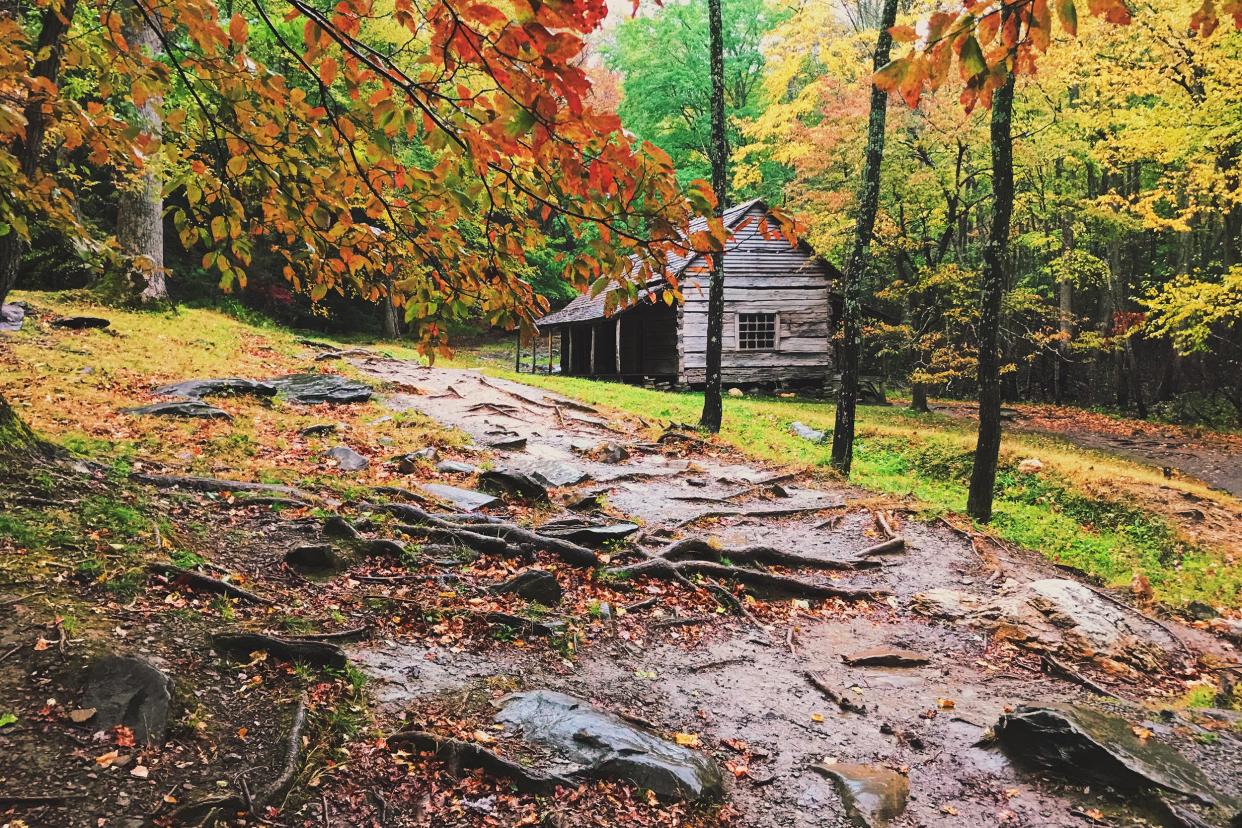
Visit Historic Log Cabins and Grist Mills
Great Smoky Mountains National Park, North Carolina and Tennessee
In addition to natural scenery, America's most visited national park is also home to some of the nation's best-preserved log structures, including more than 90 built in the 18th and 19th centuries. Surrounded by an 11-mile one-way auto loop, Cades Cove offers the park's widest variety of buildings, from homes and churches to barns and grist mills, as well as some of its best wildlife viewing. For a quieter, less crowded experience, explore the area on Wednesdays from early May through early September, when the road is open only to pedestrians and bicyclists.
Related: The 40 Best Places in America to Travel Back in Time
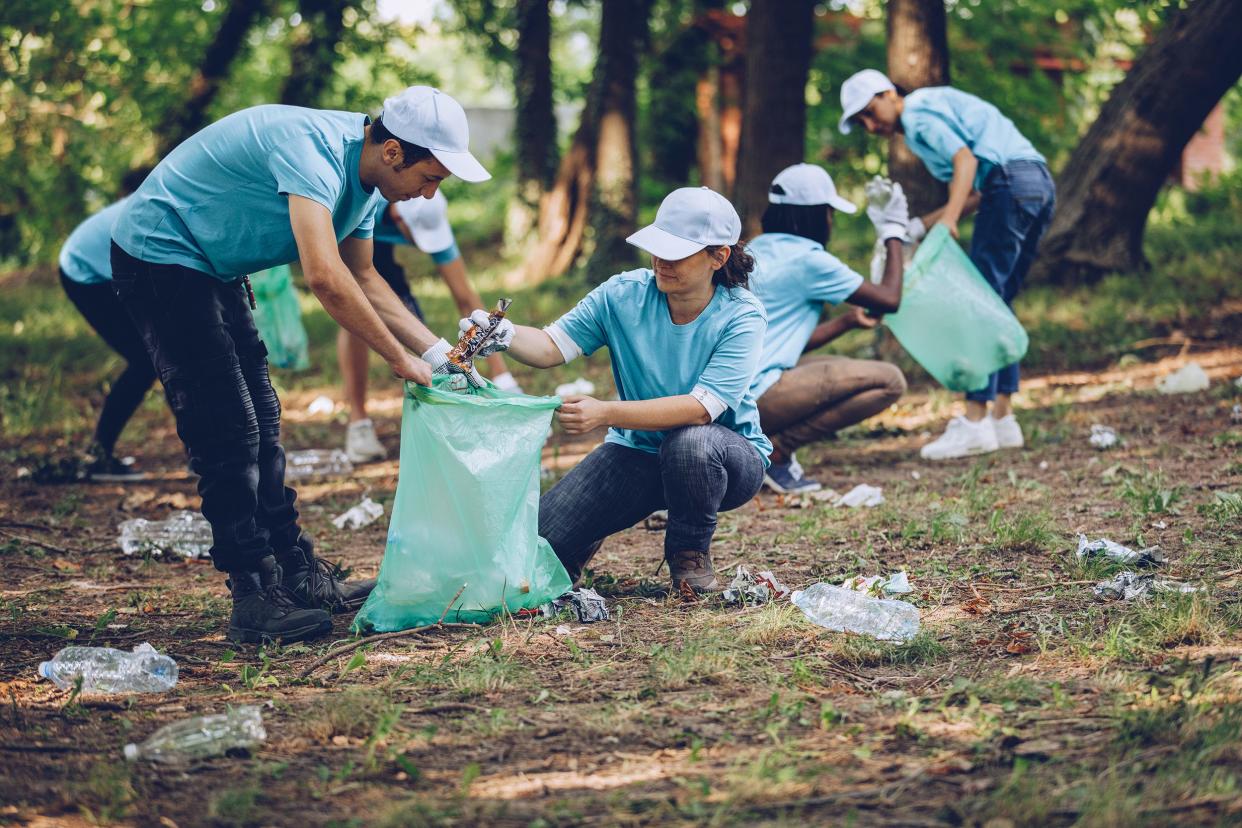
Help Keep the Parks Pristine
AnywhereWhile America's national parks are ours to enjoy, they're also every citizens' responsibility to help maintain. "While the recent uptick in national park-goers is great, and an encouraging sign for a growing societal interest in our nature's wonders, the parks are more susceptible to pollution and degradation from all the crowds," notes John Henderson, brand leader of Travelodge by Wyndham, which hosts clean-up events in national and state parks as part of its Adventure Responsibly initiative. "No matter what park you choose to visit, a can't-miss experience would be to lend a hand." Whatever national park or monument is most within reach of where you live, there are always opportunities to volunteer with the NPS, advocate on their behalf through the National Parks Conservation Association, or even organize your own cleanup event.